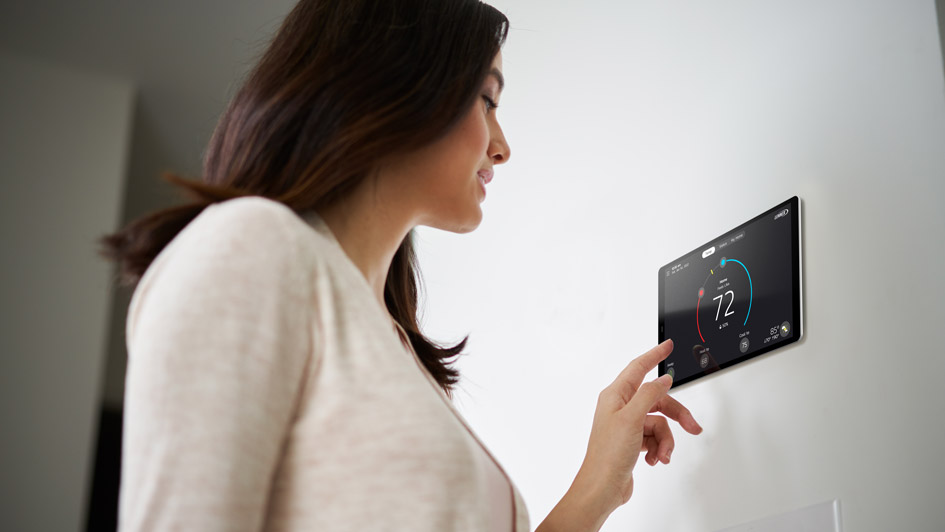
Once the weather begins to cool off, you may be thinking about how you’ll make the most of your heating and cooling. After all, HVAC bills routinely contribute a big chunk of your monthly electric bill. To try and find ways to reduce costs, some homeowners take a closer look at their thermostat. Maybe there’s a setting they could use to increase efficiency?
Most thermostats have a ‘Fan’ or ‘Fan On’ setting. But if the fan is running during a typical cycle, what can the fan setting offer for an HVAC system? This guide should help. We’ll review precisely what the fan setting is and how you can use it to cut costs in the summer or winter.
My Thermostat Has a Fan Setting?
For most thermostats, the fan setting signifies that the HVAC blower fan keeps running. Some furnaces can operate at a low level with this setting, but in general heating or cooling isn’t being produced. The ‘Auto’ setting, in contrast, will turn on the fan through a heating or cooling cycle and shut it off when the cycle is complete.
There are pros and cons to trying the fan setting on your thermostat, and the ideal option {will|can|should]] depend on your unique comfort requirements.
Advantages to using the Fan/On setting:
- You can keep the temperature in each room more balanced by enabling the fan to keep generating airflow.
- Indoor air quality will be highest since continuous airflow will keep forcing airborne contaminants into the air filter.
- A smaller number of start-stop cycles for the system's fan helps lengthen its life span. Because the air handler is typically part of the furnace, this means you could prevent the need for furnace repair.
Disadvantages to switching to the Fan/On setting:
- A nonstop fan could raise your energy costs slightly.
- Constant airflow can clog your air filter up more quickly, increasing the frequency you will want to replace it.
{Choosing Between|Should My Thermostat Be on|Which Setting for My Thermostat? Fan or Auto in Each Season
Through the summer, warm air may stick around in unfinished spaces like the attic or an attached garage. If you use the fan setting, your HVAC system may gradually move this warm air into the rest of your home, forcing the HVAC system to run longer to preserve the set temperature. In serious heat, this could lead to needing AC repair more quickly as wear and tear grows.
The reverse can take place over the winter. Cooler spaces like a basement will hold onto cooler air, which may eventually flow into the rest of your home. Leaving the fan running will sometimes pull more cold air upward, increasing the amount of heating you need to remain warm.
If you’re still trying to decide if you should use the fan/on setting, don’t forget that every home and family’s comfort needs are different. Leaving the HVAC system’s fan on could be ideal for you if:
Someone in your household suffers from allergies. Allergies and other respiratory conditions can be tough on the family. Leaving the fan on can help to increase indoor air quality, helping your family breathe easier.
Your home experiences hot and cold spots. All kinds of homes wrestle with difficult hot and cold spots that quickly shift to a temperature different from the rest of the house. The fan setting should help minimize these changes by consistently refreshing each room’s supply of air.
